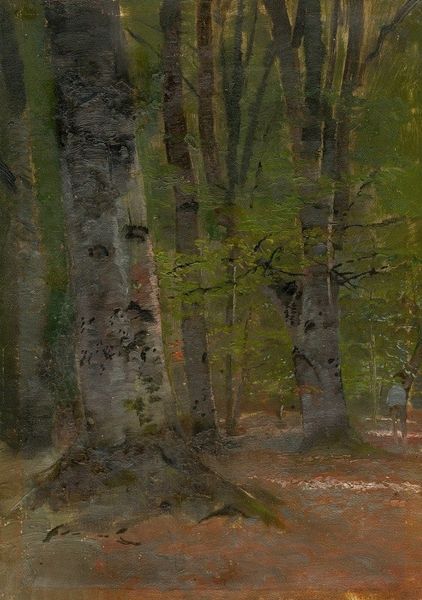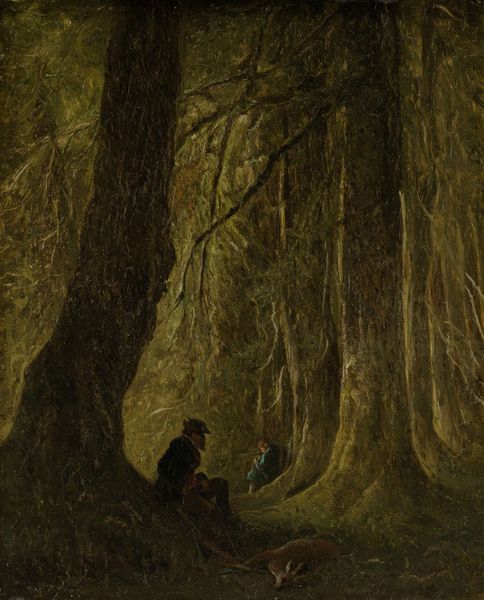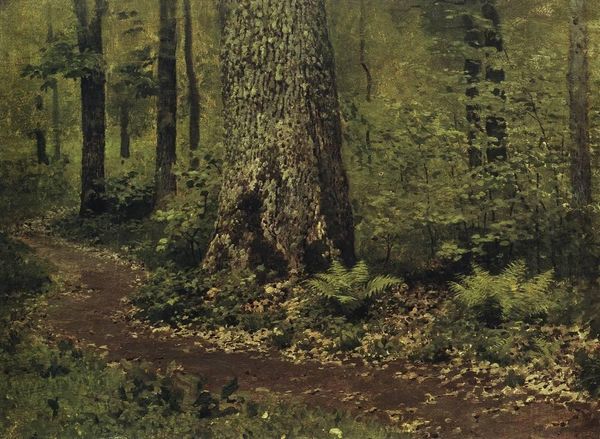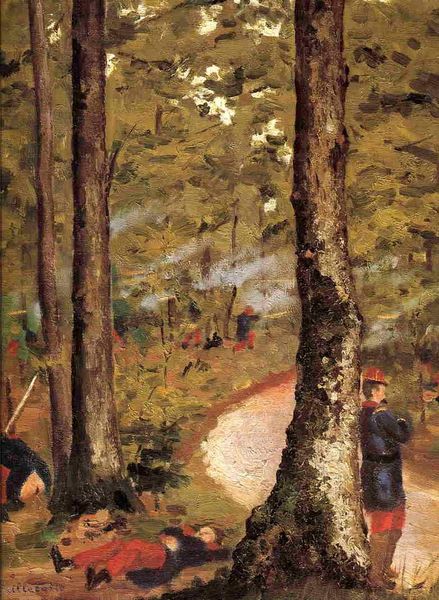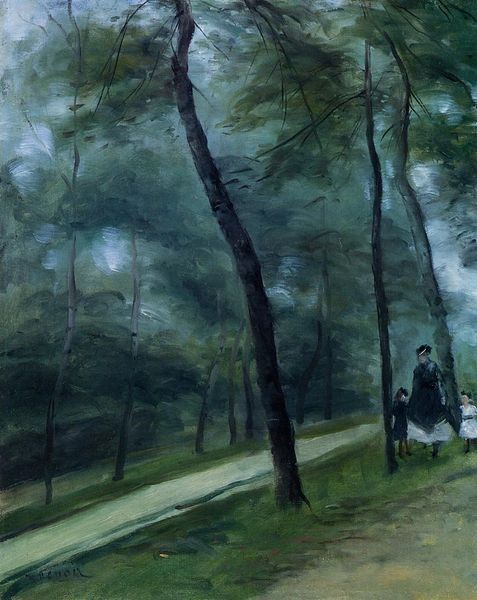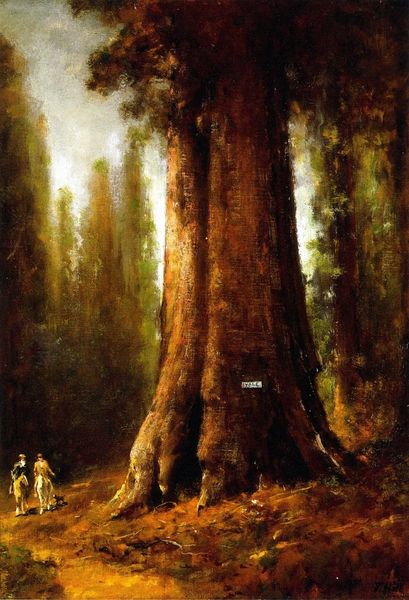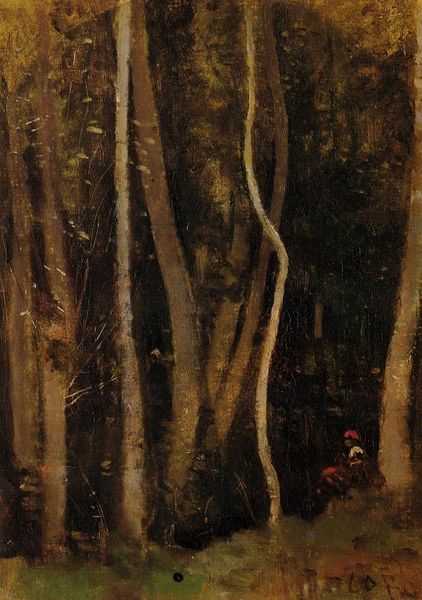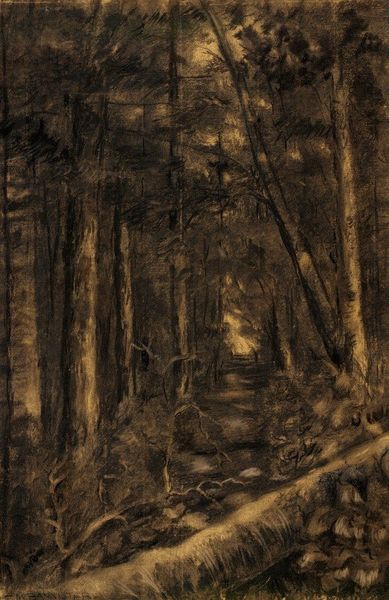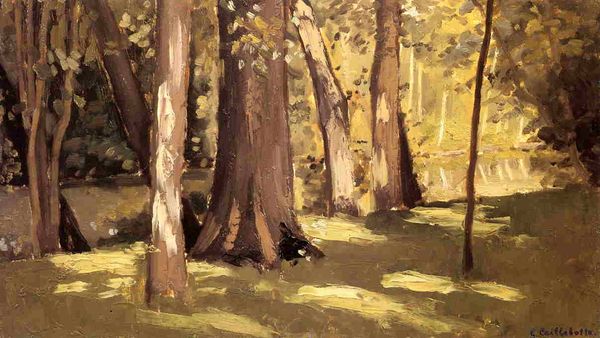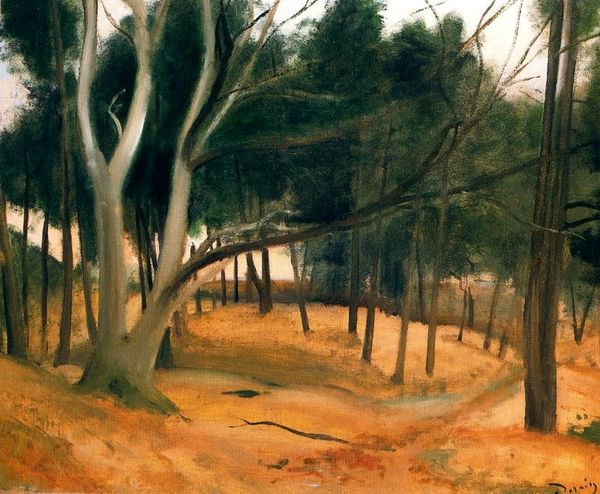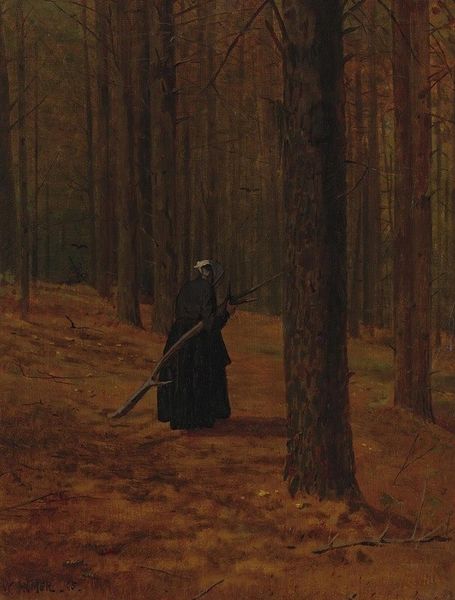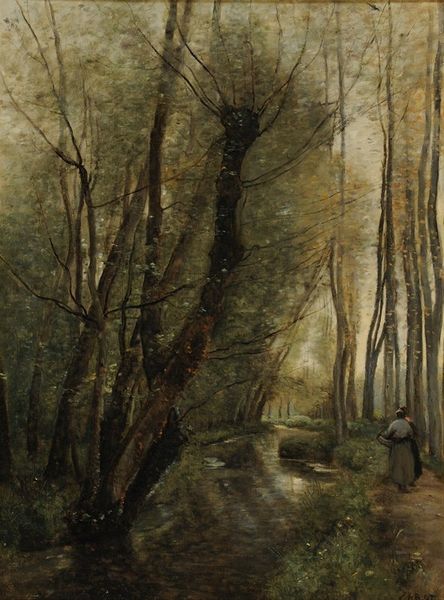
Copyright: Public domain
Editor: Here we have Van Gogh's "Girl in the Woods" from 1882, rendered in oil. It has such a wonderfully melancholic mood. What's your take? Curator: Van Gogh's choice of such a desolate setting during his early period speaks volumes. Consider the social context: 1882 in The Hague. There was immense social unrest with many flocking to the city due to poverty. Where do you think the figure of the "girl" fits into such societal despair? Editor: I hadn't thought of the broader social factors. Do you think that’s what he’s communicating or alluding to? The solitary figure, set against the vastness of the woods? Curator: Absolutely. He’s not simply painting a landscape. Van Gogh frequently chose subjects from the margins. Even the dense, almost claustrophobic, composition can be interpreted as a visual manifestation of the pressures of urbanization and alienation. Think of his later work with peasants - same social concern, wouldn't you agree? Editor: That definitely shifts my perspective. I was so caught up in the visual mood I hadn’t fully considered the artist’s socio-political stance at the time. Curator: The placement of the girl at the edge of the woods also carries weight. Is she entering, or leaving? What's she seeking? Perhaps, even representing those displaced seeking shelter? The location is more than just a setting. What do you make of that tension, visually? Editor: It's interesting to view a work in its societal timeframe. I guess that is what art history truly explores! Curator: Precisely. Next time, try considering art and its political context, and vice-versa.
Comments
No comments
Be the first to comment and join the conversation on the ultimate creative platform.

